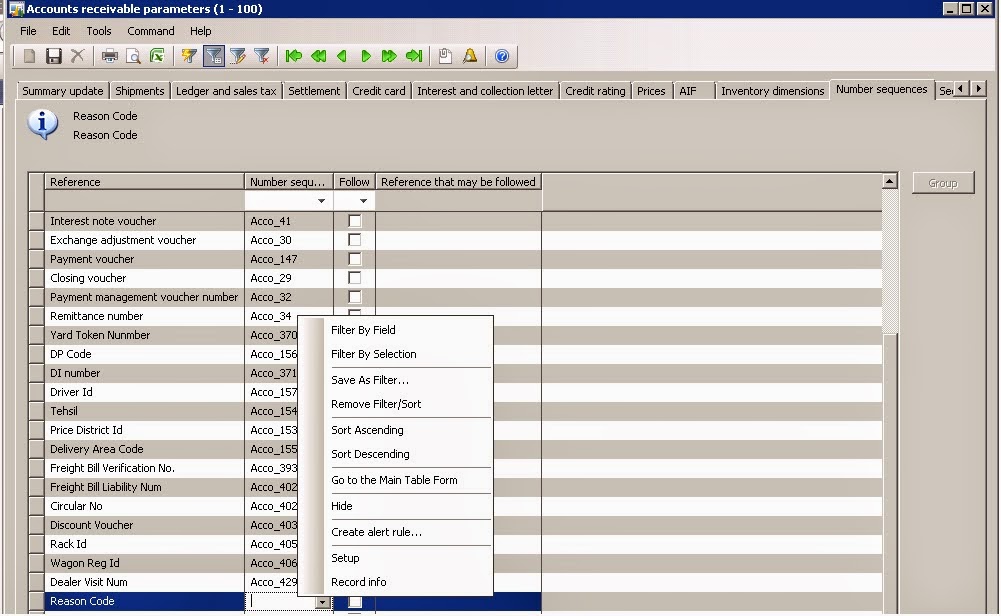It is my first Blog...expecting it will help freshers..
// #. A Fetch Method Override for A Date Range Data Retrial from Cust Trans Table as on ...
public boolean fetch()
{
// 0. Declare Variables
QueryRun qr;
QueryBuildDatasource QueryBuildDatasource1;
QueryBuildRange rangeTransDate;
Boolean ret;
CustTable custTable;
CustTrans custTrans;
// 1. A QueryRun object called qr is initialized with the active query of the report,
qr = new QueryRun(element);
// 2. Get DAtaSource from current element query
QueryBuildDatasource1 = element.query().dataSourceTable(tablenum(CustTrans));
// 3. A range for the customer transaction date field is added to Datasource
rangeTransDate = QueryBuildDatasource1.addRange(fieldnum(CustTrans, transDate));
// 4. Actusl Date Range Value is added to qr
rangeTransDate.value(queryRange(systemdateGet() - daysBack, systemDateGet()));
// 5. The range is locked, so the user cannot change it.
rangeTransDate.status(RangeStatus::LOCKED);
// 6. The transaction date range is added to the caption of the report.
element.design().caption(strfmt("%1, %2", element.design().caption(), rangeTransDate.value()));
// 7. At this point, the query is looped. The standard loop of the query and the printout of the
// record is what the super() call in fetch() handles. Before the query is looped, there is a
// check to see whether the dialogs for the query and the report are called.These are the two dialogs which are wrapped by RunBaseReportStd
if (qr.prompt() && element.prompt())
{
// 8. query is looped
while (qr.next())
{
// 9. Within each loop, the tables CustTable and CustTrans are initialized.
// If no records are found, the loop breaks and the report ends.
// If a data source has changed, a new record is found
// and the record is printed using the send() method.
custTable = qr.get(tableNum(CustTable));
custTrans = qr.get(tableNum(CustTrans));
if (!custTable)
{
ret = false;
break;
}
// 10. Note the second parameter in the send() method.
// The second parameter defines the level of the record. CustTable is on the first level of the query and
// CustTrans is on the second level. This is important since, if it is not set correctly,
// auto sums will not be printed.
if (qr.changed(tableNum(custTable)))
{
element.send(custTable, 1);
}
if (qr.changed(tableNum(custTrans)))
{
element.send(custTrans, 2);
}
}
ret = true;
}
else
ret = false;
return ret;
}
// 11. ------Tactics of reports---
// In the fetch example, the query of the report was looped. The case could also be looping
// a WHILE statement, SELECT statement, or a combination of both. For each record
// looped in the query, you might want to select a record from a table which is not part of
// the query, or even build a temporary table to be printed. For each record to be printed,
// all you have to do is call the send() method
Thanks





